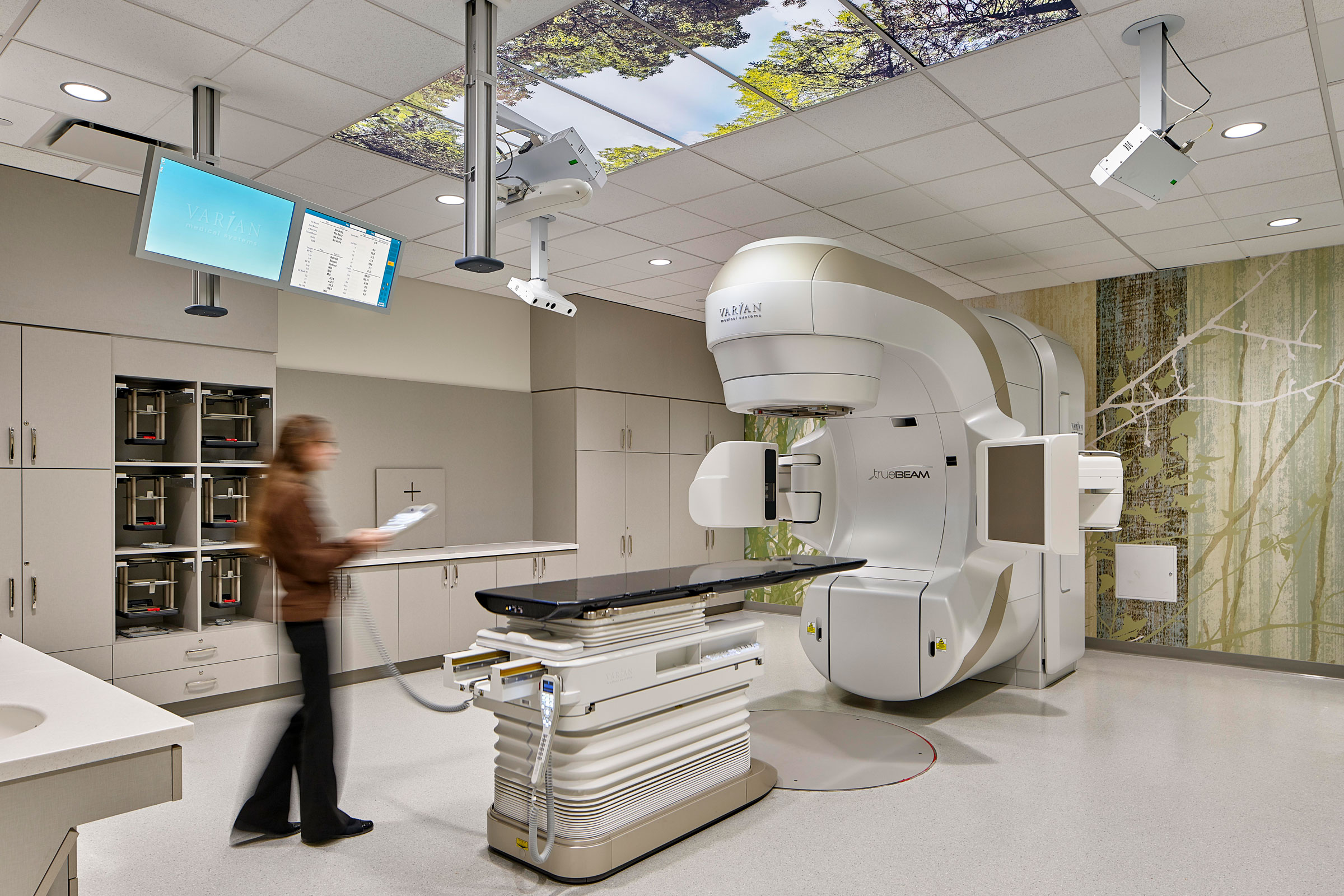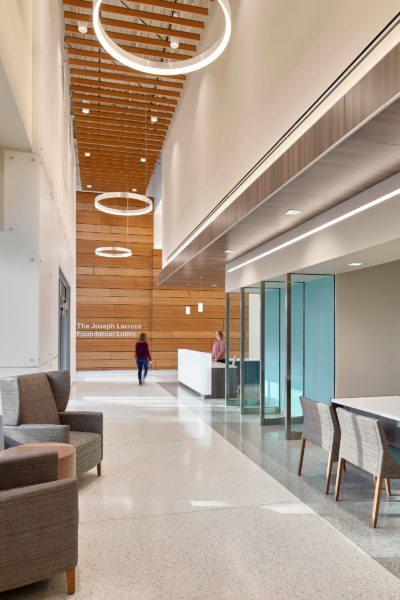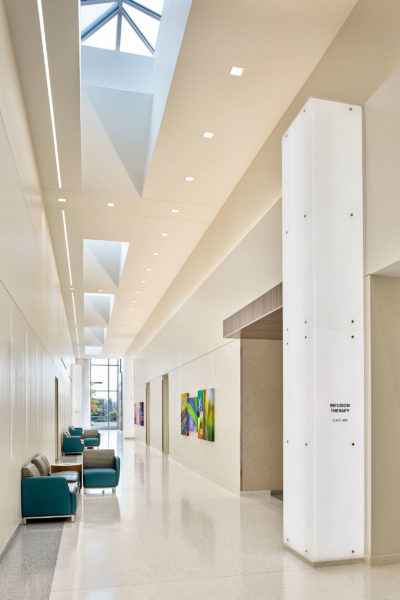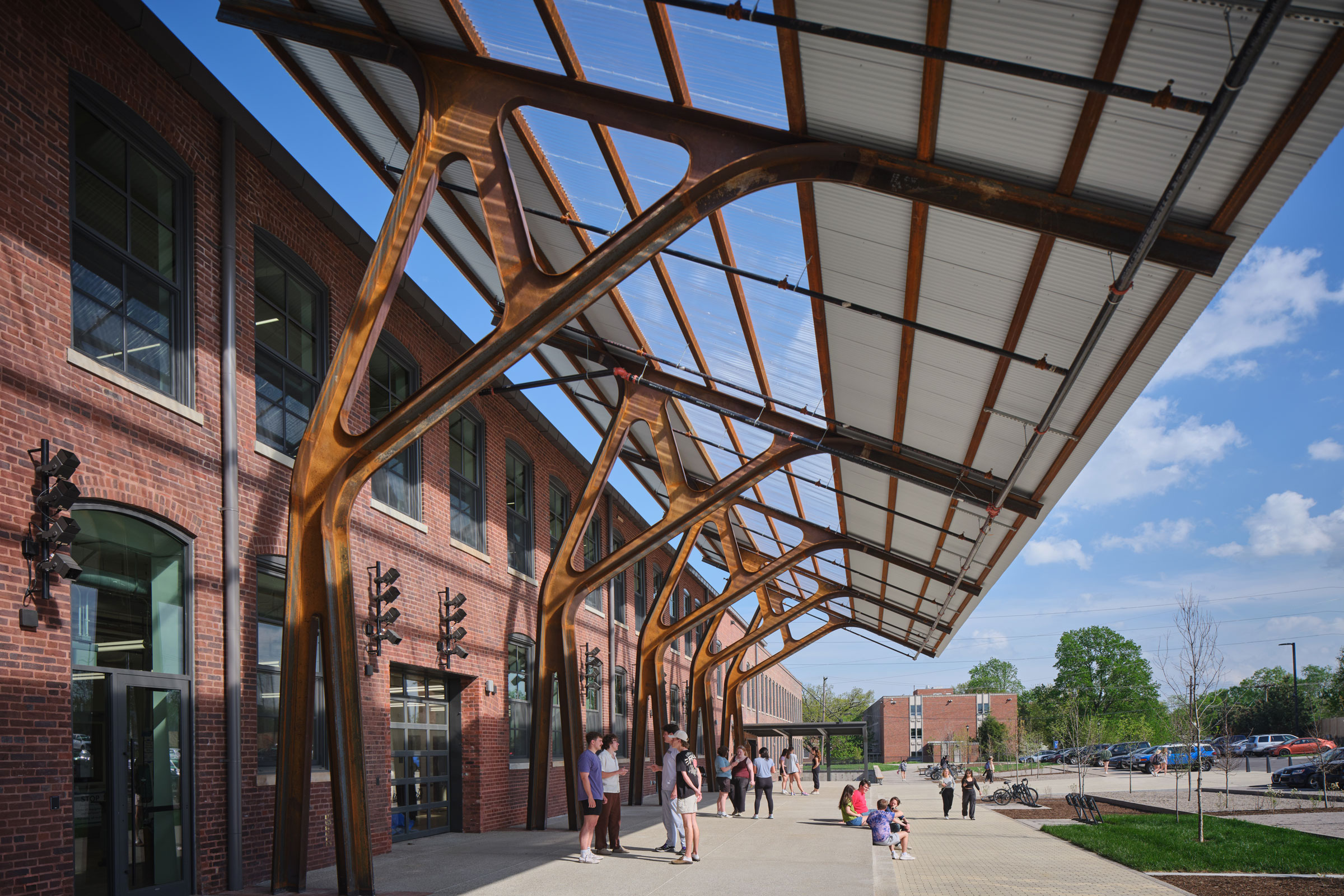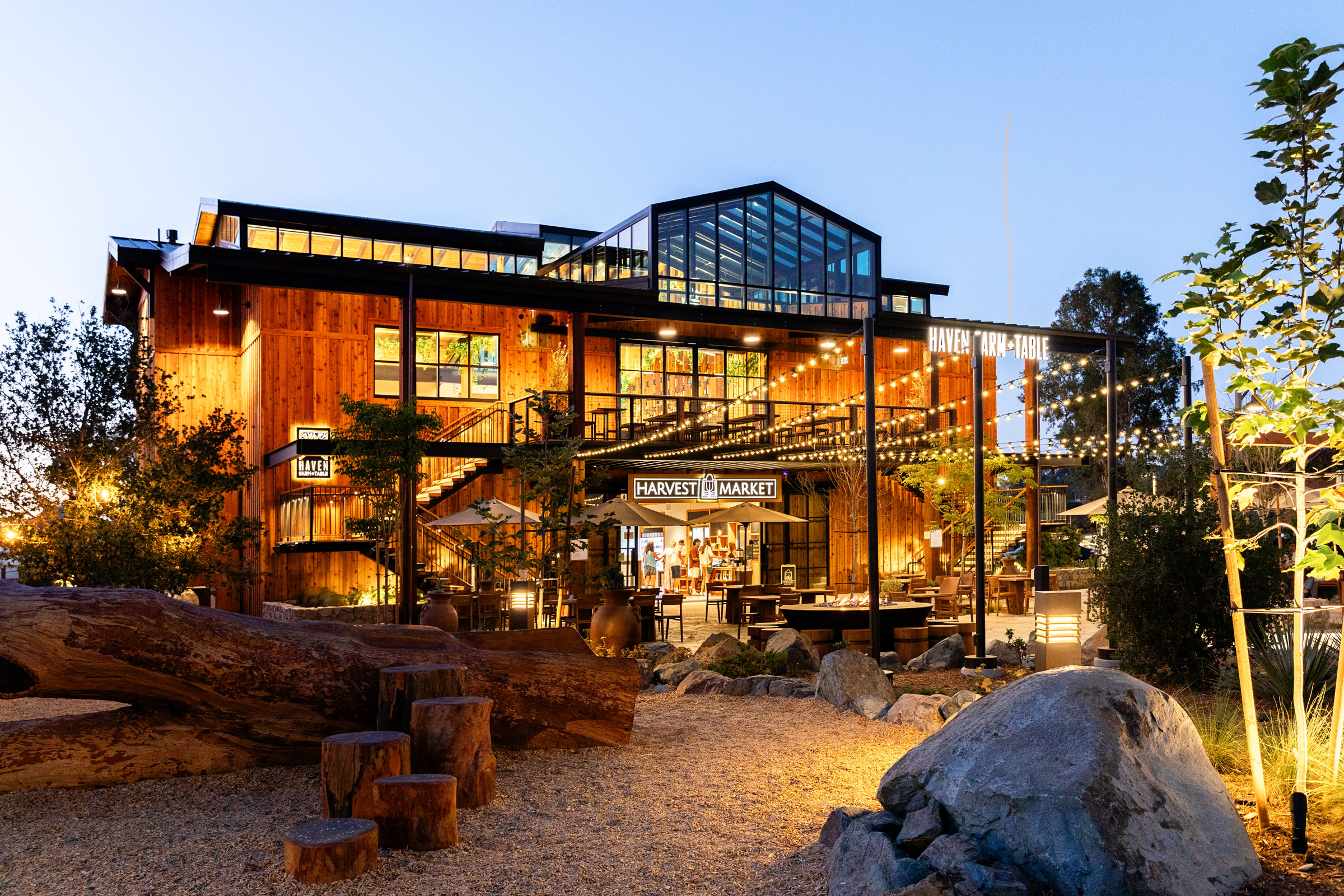Story at a glance:
- FCA transformed an old grocery store into a health care facility for Virtua Health.
- The 66,000-square-foot Moorestown, New Jersey prioritizes natural light and helpful wayfinding.
- FCA designed the “White Box” as a comforting entryway using semi-opaque white panels.
The pandemic caused a myriad of national disruptions. One of the largest, and perhaps most impactful, was a widespread economic slowdown that caused a shift to e-commerce and online shopping. Meaning big-box retail chains had to quickly assess what to do with their large, now underutilized, storefronts and prioritize efforts into an online presence over a physical one.
As a result, many stores have become vacant without lease renewals. The silver lining? A substantial opportunity for adaptive reuse in commercial real estate—especially for the health care community.
New builds can take up to three years to bring into fruition, whereas the adaptive reuse of a retail center can be turned into an accessible health care facility for a local community in just several months (depending on the scale of the project). This opportunity presented itself at a time when health care systems across the nation were seeking ways to bring care closer to the communities they serve.
The transformation from a big-box store to a health care center is a sustainable way to repurpose existing buildings. It’s also a convenient approach to deliver projects to market faster than with a traditional new building project. Adaptive reuse in commercial real estate saves time, money, and resources––which lends to a brighter, more environmentally friendly approach to the future of retail real estate. Not to mention, if this works in health care, just imagine how other industries could benefit from the renovation of underutilized retail space.
Recognizing Potential for Adaptive Reuse in Commercial Real Estate
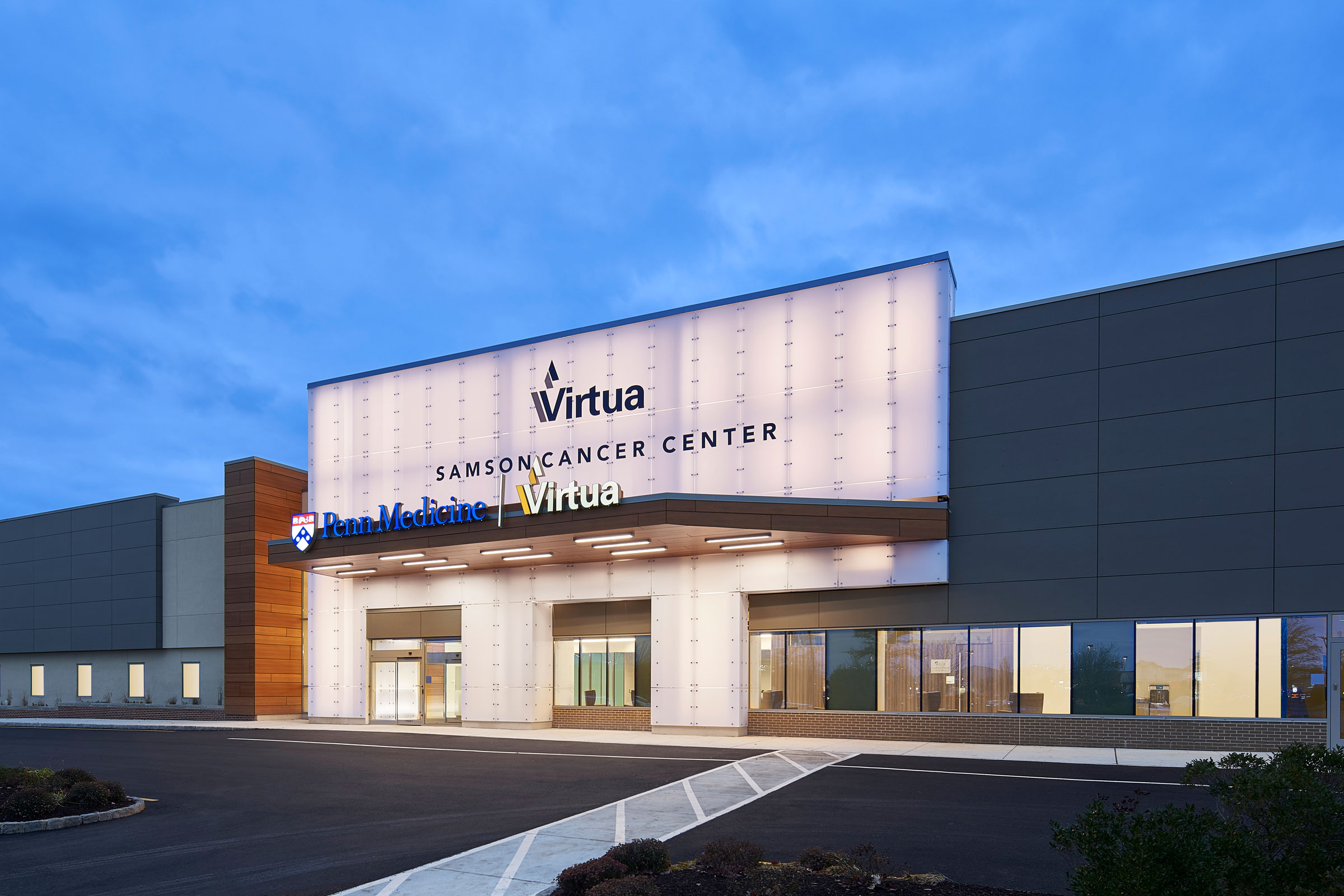
The “White Box” represents cancer in a patient’s life. Just as cancer is not a normal, everyday event, the “White Box” is not an everyday entry point. Its semi-opaque white panels create one uniform object that can be seen from the street. The front elevation is at odds with the roadway and sidewalk, jutting out at the left edge, instead of being parallel. The front elevation is imbalanced and off-center, with three vertical columns that hold up a misaligned upper mass. Photo courtesy of FCA
When choosing the best space for an adaptive reuse commercial real estate project, many factors must be considered. From location and access to adequate onsite parking and the building’s potential for adaptability, it’s important to note not every empty store has the ability to transform, but many do in fact have great potential.
Health care organizations looking to undertake an adaptive reuse project, particularly when transforming empty retail stores to health care centers, must ask specific questions, including: How much of their business has shifted to remote telehealth interactions, and how much routine care will stay that way when the pandemic has passed? In other words, at what level does this space need to support a hybrid patient pattern? How do they safely interact, greet, process and efficiently treat those patients who are present in-person? In what ways do patients need differing levels of care and interaction?
When repurposing a building, it’s also important to consider the local zoning approvals needed. One of the attractive elements of this type of development, adaptive reuse, can be the simplified approvals versus new-build construction. If you are not disturbing the land and creating any additional parking or other site elements, the land development approvals process, which could take several months for a new building project, could be substantially simpler.
Ensuring a Community-Centric Design
- The Trespa clad canopy indicates the main entry point. The Trespa panel system is applied on the left of the glass opening to bookend the edge of the glass opening. Photo courtesy of FCA
- The Virtua Samson Cancer Center was designed with wayfinding in mind. The Main Gallery can be seen from the exterior by way of a full-height glass opening, allowing visitors to find their bearings inside and outside of the building. Photo courtesy of FCA
The transformation from local stores to health care centers will allow medical resources to seamlessly integrate into communities that are underserved. The need to locate this space away from acute care campuses has grown and become even more important now that hospital space is being reserved for severely ill patients.
One of the aspects this most recent pandemic has brought to light is that many impoverished neighborhoods, which were impacted very hard by COVID-19, lacked the access to patient care that can be found in other communities. Therefore, acquiring and consolidating multiple physician practices in the same neighborhood location has become a priority for health systems.
Branding these facilities so they are recognized as part of the larger system of care is also critical to their success. Branding is especially important because it builds trust and customer loyalty. Overall, the fast speed of adaptive reuse projects alongside the growing need for health care across the country will provide more people with better, closer, and timely care.
Transforming into a Health Care Facility
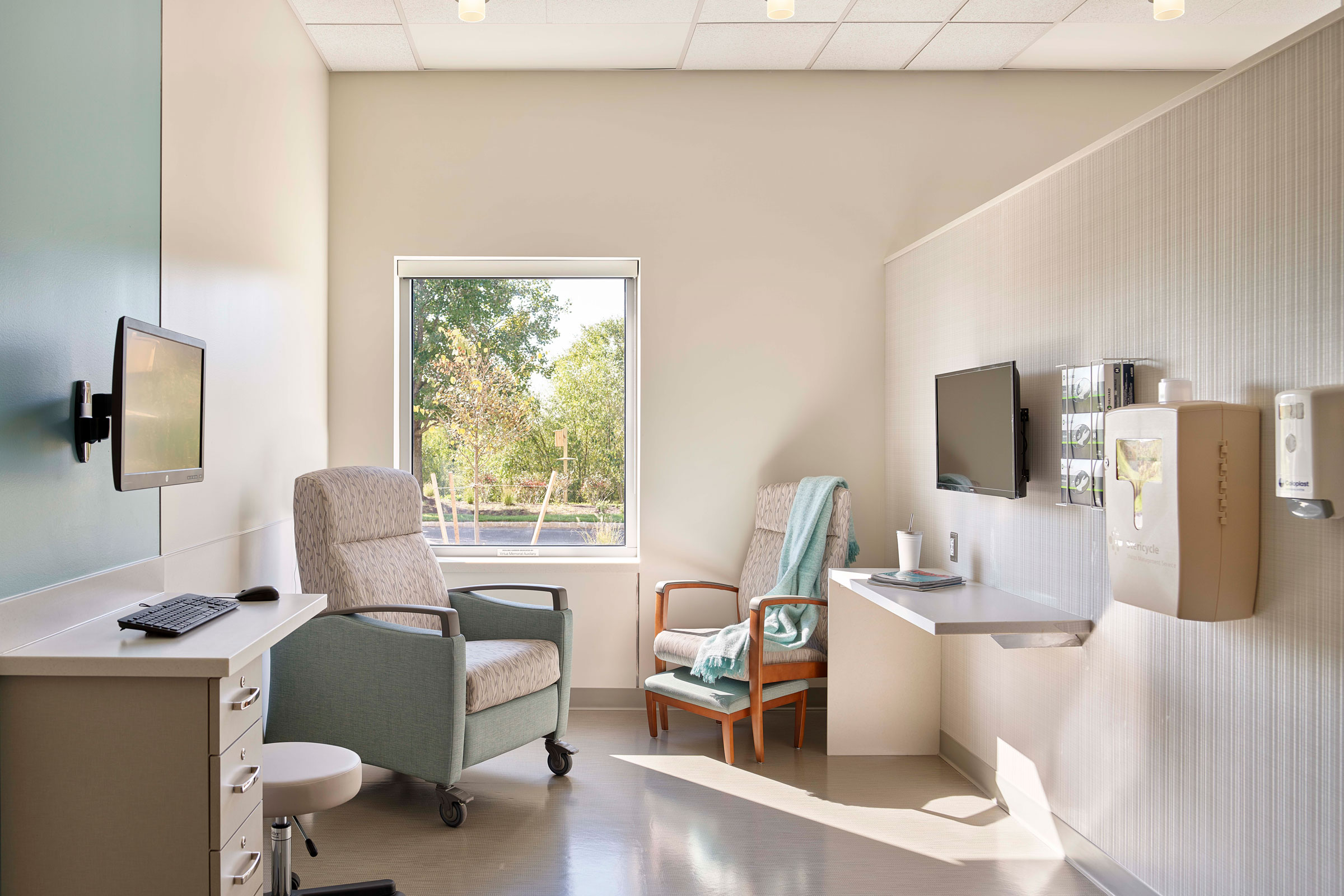
Rooms in the Moorestown, New Jersey facility designed by FCA prioritize natural light and views of nature. Photo courtesy of FCA
While the framework may be there, it is not a simple task to turn an empty shop into a high-functioning health care facility, but it is a worthwhile one. Exterior cosmetic upgrades, interior demolition, and careful strategic modifications will make a substantial difference in building design.
When considering a building for an adaptive reuse commercial real estate project, the existing exterior may require a bigger investment to re-brand in order to have the type of impact one might be looking to achieve with the facility. Cosmetic upgrades like highlighting windows and entry points or changing exterior stucco colors can have a big influence on success of the center, as can signage and adding wayfinding elements like canopies and lighting.
Infrastructure is another significant component to analyze. This includes the existing mechanical, electrical, and plumbing systems. These systems should be studied for service life and replaced or upgraded for efficiency. It is essential to think ahead about the location, space, and connection to electrical systems especially in medical spaces that may require an emergency generator to be installed. This all goes back to the longevity of a project.
Additionally, the core and shell of the building must be understood. Many supermarkets and big-box retailers have high bay construction, which means it can be 24 feet of clear height on the inside. That’s great for easy installation of mechanical systems, but expensive to hang people-level ceilings, in addition to conditioning the spaces above.
The roof construction can be very lightweight and not suitable for supporting rooftop systems so it is important to investigate early. Many exterior walls are generally a single width of masonry with insulation in the exterior coating.
Time and money will need to be invested for an energy-efficient shell, but it’s generally quicker, easier, and cheaper to upgrade existing walls than to build new ones.
Case Study: Virtua Health, New Jersey
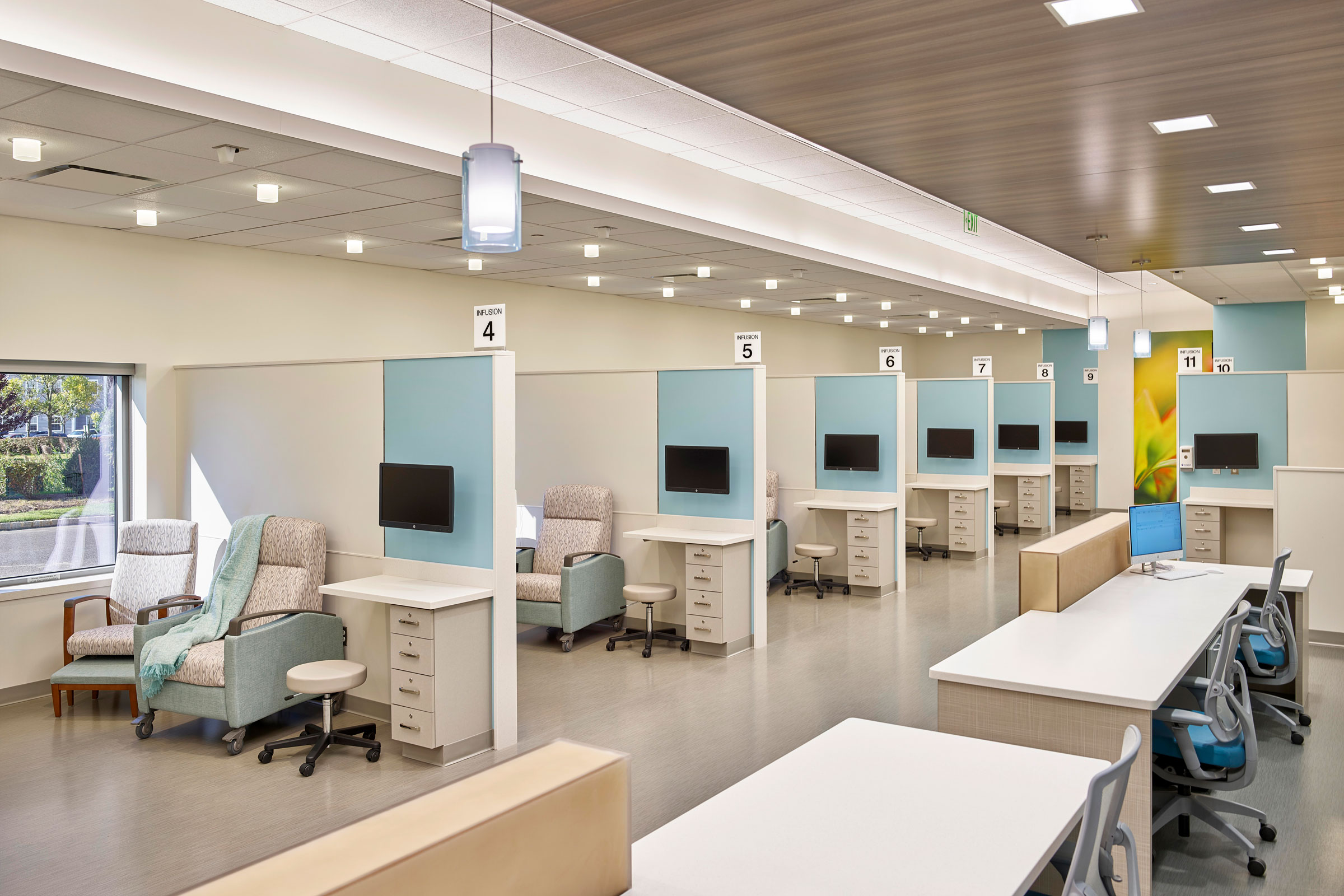
FCA used natural and diffused light throughout the cancer center’s design. Photo courtesy of FCA
When Virtua Health wanted to rezone and repurpose a former ACME supermarket into a cancer care center, they turned to our team at Francis Cauffman Architects (FCA) to tackle the adaptive reuse in commercial real estate.
The old supermarket was near Virtua Health’s Health and Wellness Center in Moorestown, New Jersey. The new facility accommodates radiation oncology, an infusion treatment suite, a cancer administrative suite, and a third party infusion practice.
Sitting directly across from Virtua’s Health and Wellness Center, the 66,000-square-foot space was reimagined to promote a sense of hope, serenity, and healing, with high ceilings, windows that let in natural light, and vibrant artwork featuring scenes found in nature. Biophilic design was also emphasized, as a new garden is visible from the infusion patient treatment spaces for another connection to the outdoors.
Skylights are used in the central circulation concourse where each destination entrance is located. The design team strategically placed treatment rooms, taking into consideration those patients who are sensitive to natural light versus those who aren’t.
The building’s previous structure had very high ceilings, prompting a challenge for smaller rooms that require acoustical privacy. A substructure was implemented to allow the ceiling and lighting to be suspended from it, minimizing the need to construct full-height walls to the full height of the structure.
Long-Lasting Health Care Facilities
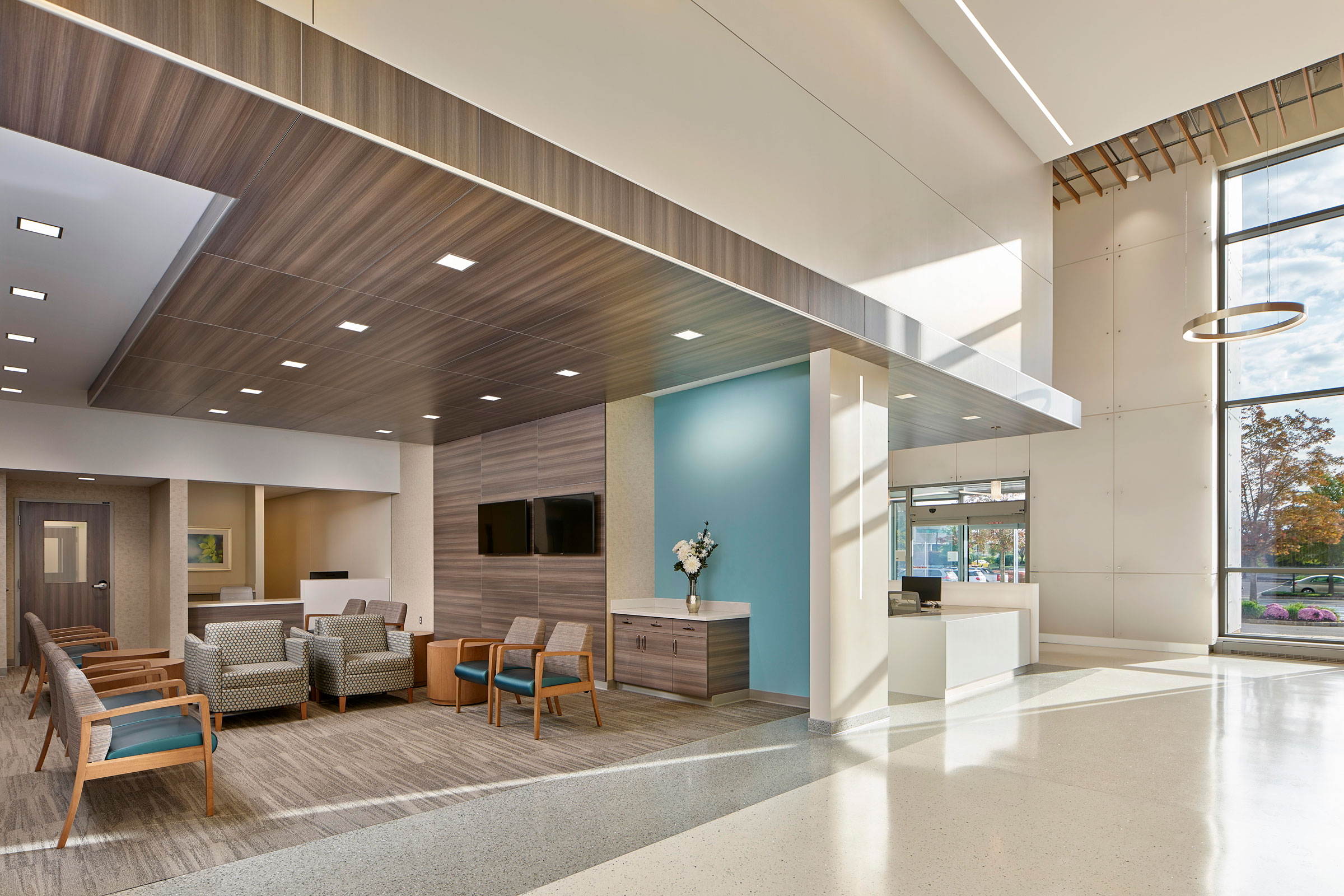
The Virtua Samson Cancer Center, designed by FCA. Photo courtesy of FCA
Buildings with future growth or expansion capabilities should be considered great candidates for adaptive reuse in commercial real estate. Creating a treatment space that has the most flexibility for the longterm is very important because physicians and their care delivery models change over time.
In order to create a long lasting health care facility, it is necessary to align the program needs with the available space, and to account for the available space’s potential for future growth. These spaces need to be agile, whether it’s an ambulatory surgery center that has potential for a future eye practice, or a cancer program that could have future immunotherapies that may need infusion spaces. The ability to expand into adjacent spaces with minimum impact on the facility as a whole is an important consideration.
The Future of Adaptive Reuse in Health Care
Health care professionals and organizations across the country have found themselves with an unprecedented and remarkable opportunity to consider repurposing existing retail buildings for a better future for the health care industry. Choosing to repurpose an existing building is a socially responsible and sustainable way to bring care closer to the communities that need it. The speed at which a building can be repurposed allows for healthcare facilities to be developed quickly and more efficiently. Understanding the particular building and its advantages and limitations ahead of time, will make the investment and outcome for the community that much greater.

